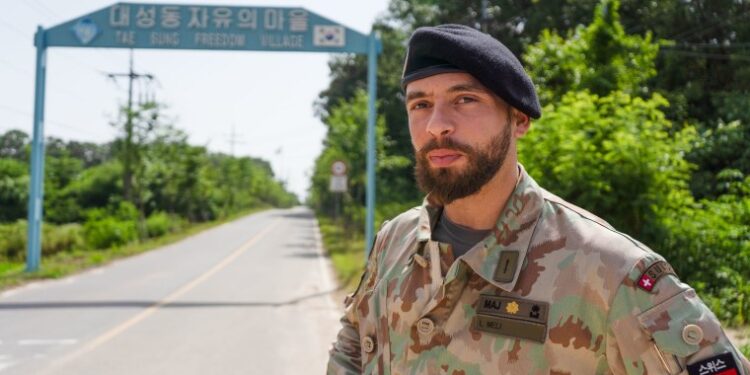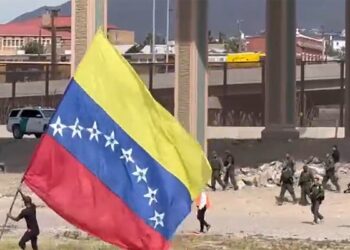PANMUNJOM, Demilitarized Zone — With his bed less than 50 feet from the North Korean border, Maj. Luca Meli jokes that he sleeps closer to the reclusive nuclear-armed state than anyone in the world.
From his bedroom in the heavily fortified buffer zone that separates North and South Korea, the Swiss soldier has a front-row view of the North’s expanding military activities amid the highest tensions on the Korean Peninsula in years.
“We hear explosions every night,” he said.
As a delegate to the Neutral Nations Supervisory Commission (NNSC), an organization made up of five Swiss and five Swedish soldiers who live in the Demilitarized Zone, Meli is tasked with monitoring adherence to the armistice agreement that ended the Korean War in 1953.
While the agreement ended fighting on the Korean Peninsula, a final peace treaty was never signed. The two Koreas are now separated by the 2.5-mile-wide DMZ, where nature has flourished as its fields and forests have gone largely untouched for decades.
“These two countries are de facto still at war, and so anything can happen,” Meli said. “It’s really peaceful, but you feel that it’s fragile.”
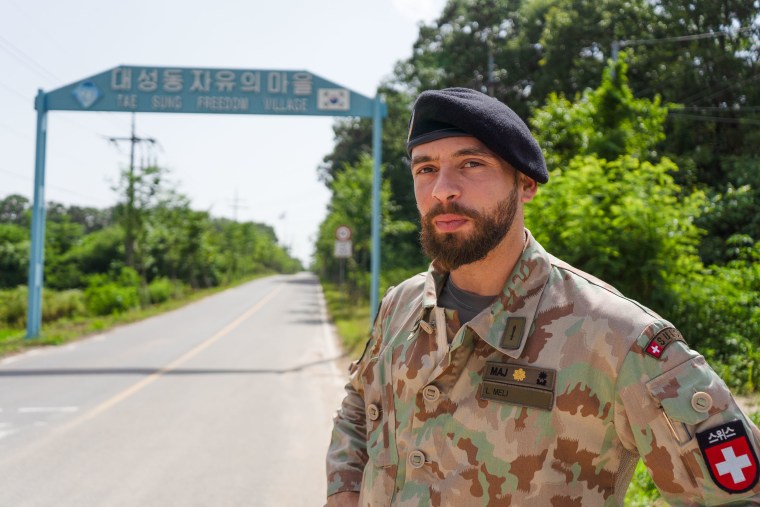
Tensions have ratcheted up in recent weeks as North Korea sent trash-carrying balloons to the South in apparent retaliation for anti-Pyongyang leaflets that activists in South Korea dropped over its territory. South Korea, a treaty ally that the U.S. has pledged to defend, has responded by suspending a 2018 military pact aimed at reducing inter-Korean tensions and restarting anti-Pyongyang propaganda broadcasts from loudspeakers in border areas for the first time in six years.
In recent days, South Korea has also followed North Korea in resuming live-fire drills near the border, while North Korea continued a barrage of testing related to its nuclear weapons and missile programs following the end of joint military exercises in the region among the United States, South Korea and Japan.
North Korea — which recently signed a mutual defense pact with Russia that has alarmed the West — views such exercises as a rehearsal for invasion, which the U.S. and its allies deny.
The tensions are perhaps most evident along the DMZ, which is becoming increasingly militarized after the scrapping of the 2018 agreement by North Korea last November and South Korea last month. Experts say that militarization raises the risk of cross-border conflict at a time when the world is already occupied by multiple wars including in Ukraine and the Middle East.
The changes include an uptick in construction activity on the North Korean side, as evidenced by the explosions that Meli and others at the NNSC hear almost every day.
“It looks like they’re building walls, they’re building roads, and they’re building fences. They’re also mining areas,” Lt. Col. Livio Räber, operations officer of the NNSC, said in an interview at Camp Humphreys, a U.S. military base that is home to most of the 28,000-odd American troops currently stationed in South Korea.
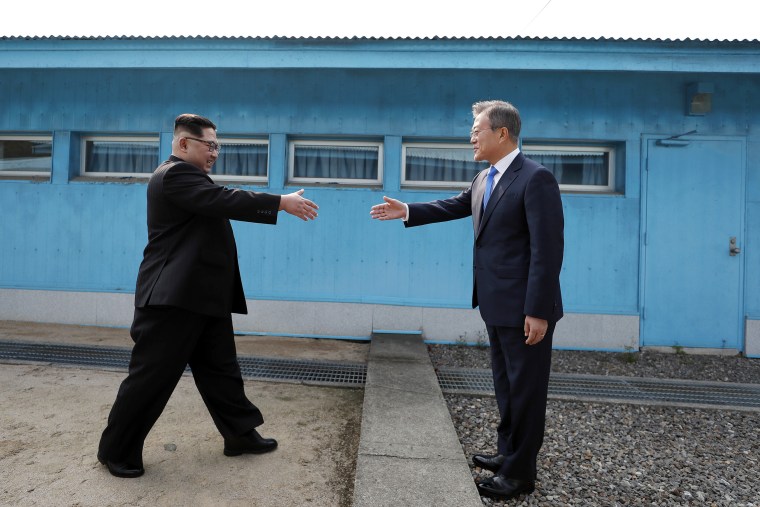
At the same time, communication across the border has worsened.
“Dialogue is missing,” said Maj. Gen. Ivo Burgener, head of the Swiss NNSC delegation. “This increases uncertainty, which in turn increases the risks.”
This uncertainty plays out inside the DMZ itself. In the Joint Security Area, the only place in the DMZ where North and South Korean forces stand face to face, border guards are once again armed.
On a screen inside the Joint Security Area Visitor Center, Meli pointed out a live feed showing North Korean soldiers at work repairing a building on their side of the DMZ.
But the work goes far beyond renovations. South Korean officials say they believe the explosion of North Korean land mines along the border has caused multiple casualties among North Korean troops.
“North Korean soldiers are unreasonably continuing with their labor despite these accidents and casualties,” they said last month.
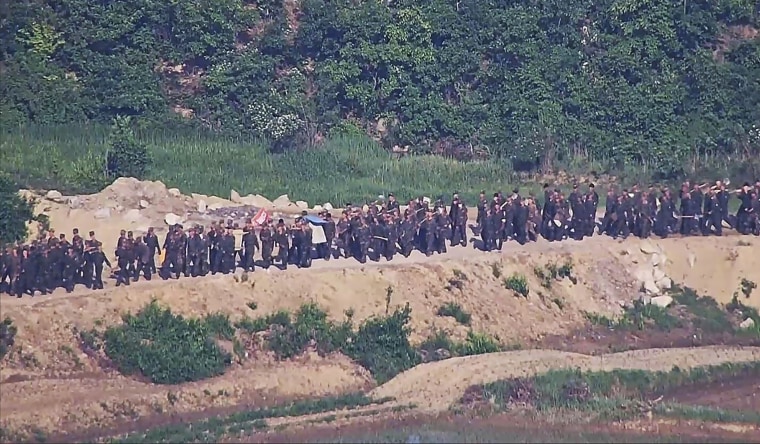
While the exact purpose of these newly placed mines is unclear, Räber said they could be used to render areas of the DMZ inaccessible to the South and to deter potential defectors seeking to flee across the border from the North.
He added that the increase in construction activity has also led North Korea to bring in soldiers who are less familiar with the DMZ. Unused to working in this sensitive environment, these soldiers have inadvertently strayed across the border on three occasions in recent weeks, prompting warning shots from the South.
While South Korean officials say these crossings appear to be unintentional, experts say incidents such as these raise the chances of accidental conflict.
“The situation is relatively stable, but the risk of escalation has increased,” Burgener said.
Back in the Swiss camp, with a basketball hoop, a barbecue set and the sound of wind rustling through the surrounding forest, it’s possible to forget that the soldiers’ huts are on the front lines of a frozen conflict.
Räber said it can often feel like “the calmest place in the world.”
But with more soldiers, more weapons, more activity, and less dialogue across an increasingly militarized DMZ, Räber continued, “We have to remember where we are, and where we work.”
“It could become the most dangerous place in the world within seconds, minutes or hours,” he said.

